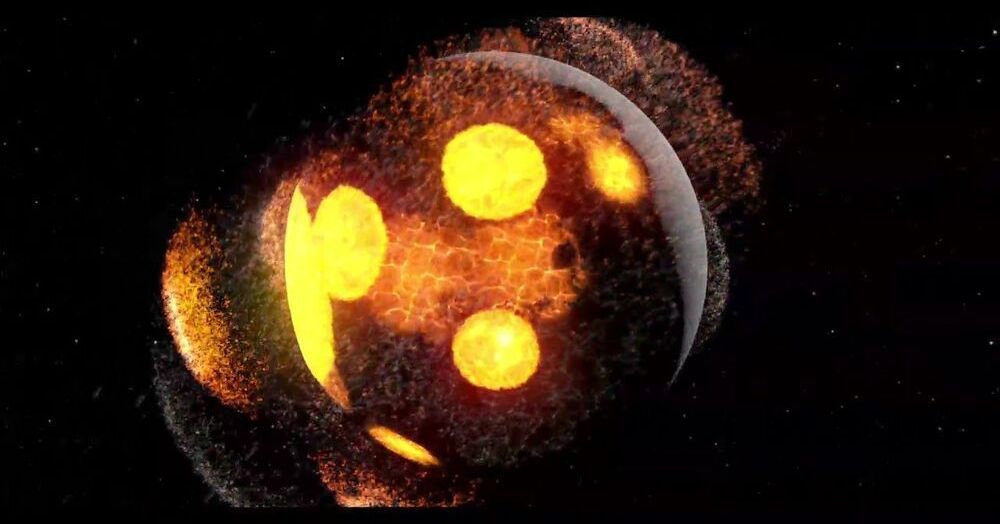Simulations rule out plasmas caused by meteoroid impacts as the source of lunar magnetism, supporting the proposal that the ancient moon generated a core dynamo.
Today, the moon lacks a global magnetic field, but this wasn’t always the case. Spacecraft measurements of the moon’s crust and lunar rocks retrieved by the Apollo missions contain remnant magnetization that formed 4 to 3.5 billion years ago in a magnetic field comparable in strength to that of the Earth. Scientists have argued that the source of this was a dynamo — a magnetic field generated by the moon’s churning, molten, metal core. However, research indicates that the moon’s suspected small core may not have been able to generate enough energy to sustain the ancient magnetic field that planetary scientists have inferred from in its rocks.
In a recent Science Advances paper, research scientist Rona Oran and professor of planetary sciences Ben Weiss of the MIT Department of Earth, Atmospheric and Planetary Sciences examined the plausibility of an alternative hypothesis that has been around since the 1980s that could produce the remnant magnetization in the lunar crust: transient plasmas generated by meteoroid impacts. Here, they describe some of their findings.









Comments are closed.